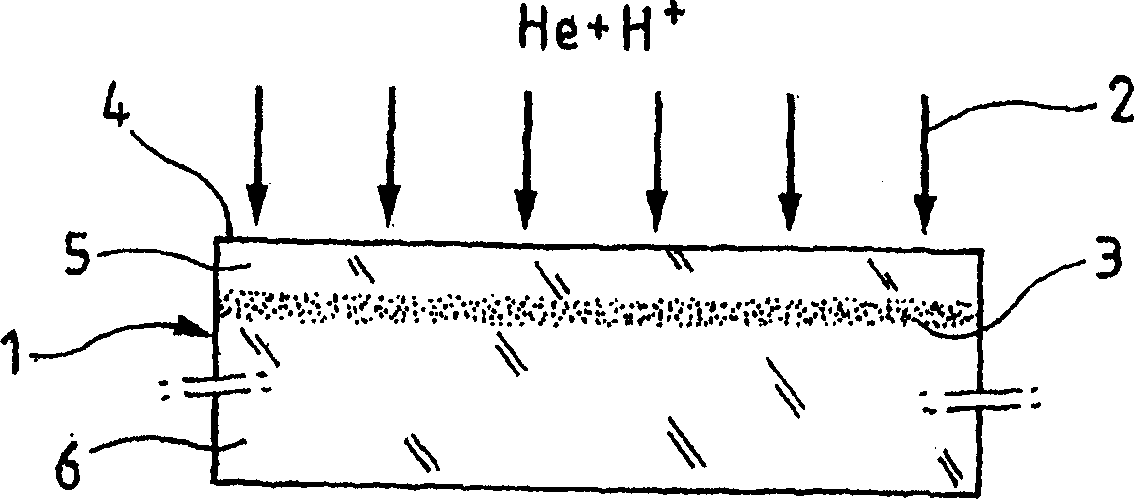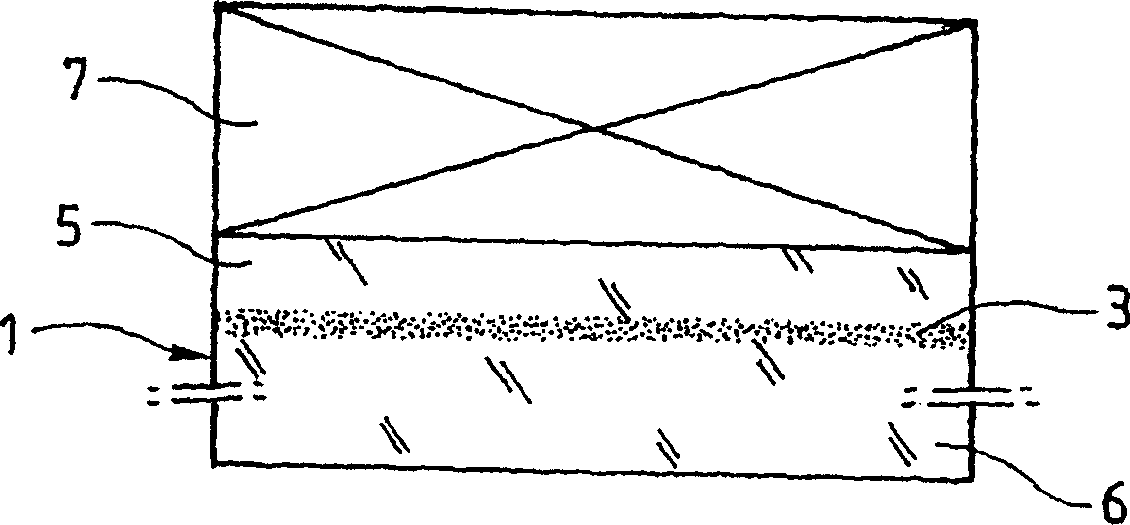Catastrophic transfer of thin film after co-implantation
A transfer method and thin-layer technology, which is applied in the fields of electrical components, microstructure technology, semiconductor/solid-state device manufacturing, etc., can solve problems such as no derivation, and achieve the effect of avoiding ring defects and improving topology
- Summary
- Abstract
- Description
- Claims
- Application Information
AI Technical Summary
Problems solved by technology
Method used
Image
Examples
example
[0086] According to a first implementation example of the present invention, a surface (for example 145nm) contains a thermal SiO2 2 layer of Si substrate (-700μm) can be first at 70KeV-10 16 He / cm 2 Helium atoms are implanted under the implantation conditions, and then at 30KeV-4.25×10 16 H / cm 2 Hydrogen atoms were implanted under the implantation conditions. The source substrate can then be bonded to a target Si substrate (-700 μm) by direct bonding. A heat treatment around 350°C causes the increase of small disk-type cavities localized where the hydrogen concentration is maximum. There the helium atoms act as trapped atoms and generate the greatest number of small disk-type defects at the applied temperature. After a certain time (eg 2 hours), as soon as a blade is inserted between the bonded interfaces in the form of an impact, the catastrophic detachment of the hydrogen concentration maximum results in the transfer of a thin Si layer to the target substrate. The rou...
PUM
 Login to View More
Login to View More Abstract
Description
Claims
Application Information
 Login to View More
Login to View More - R&D
- Intellectual Property
- Life Sciences
- Materials
- Tech Scout
- Unparalleled Data Quality
- Higher Quality Content
- 60% Fewer Hallucinations
Browse by: Latest US Patents, China's latest patents, Technical Efficacy Thesaurus, Application Domain, Technology Topic, Popular Technical Reports.
© 2025 PatSnap. All rights reserved.Legal|Privacy policy|Modern Slavery Act Transparency Statement|Sitemap|About US| Contact US: help@patsnap.com



